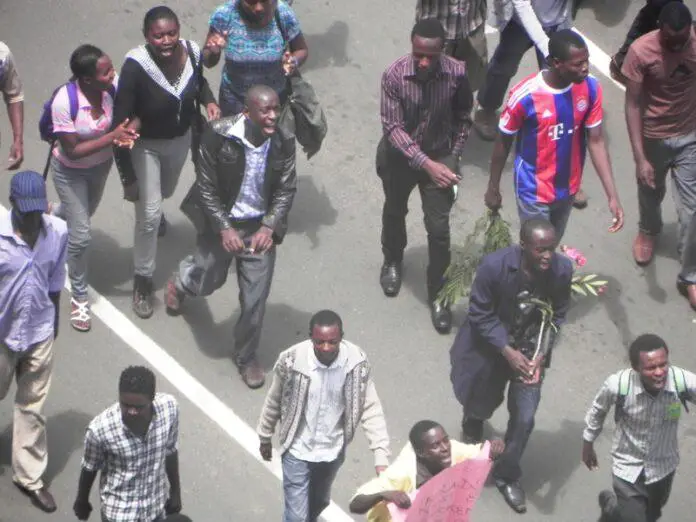In the latest wave of protests against the escalating cost of living, six people were killed during clashes with police on Wednesday, July 12, police reported.
The protests in Kenya are driven by opposition leader Raila Odinga’s quest to reverse a new law that imposes additional taxes.
Police reports indicate that the fatal casualties occurred in various locations, with three in Mlolongo town, two in Kitengela town near Nairobi, and one in Emali town on the Mombasa highway. In addition to the deceased, over ten individuals were injured and hospitalized. The Kenyan police have faced backlash from human rights groups for their handling of the protests, particularly for using force.
More than 50 school children in Nairobi were exposed to tear gas during the protests, leading to a state of panic among the young students. These children, aged between 10 and 15, were treated at a nearby clinic and returned to their parents. According to Alvin Sikuku, a health records worker, the situation has since been defused.
Protests in several Nairobi areas saw tires set on fire and the entrance to a toll expressway blocked. This expressway, used predominantly by wealthier individuals, is in stark contrast to the congested daily traffic experienced by the majority of the population. The protests caused disruptions in traffic and damage to public property, with opposition supporters blamed by the interior ministry.
Opposition leader Odinga has voiced criticism against the police for blocking his planned speech location and pledged to persist with the protests. Odinga insists on the need to repeal the new tax measures due to the mounting struggles faced by Kenyans, which include the country’s significant debt and rising prices.
President William Ruto, who promised to lessen the financial burden on Kenyans, is now grappling with increased challenges due to the protests. The demonstrations’ economic fallout is causing disruptions in the everyday lives of citizens, affecting their schooling and work routines. Police demands for prior notification of protests have raised concerns, despite the constitutional protection for the right to peaceful assembly.

